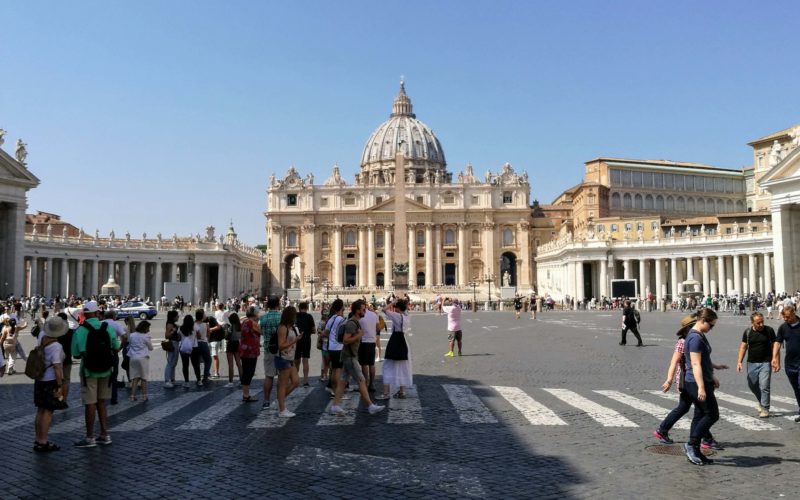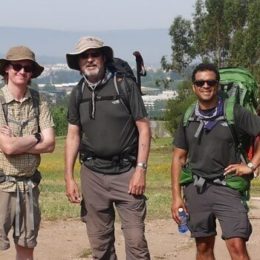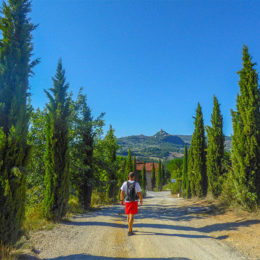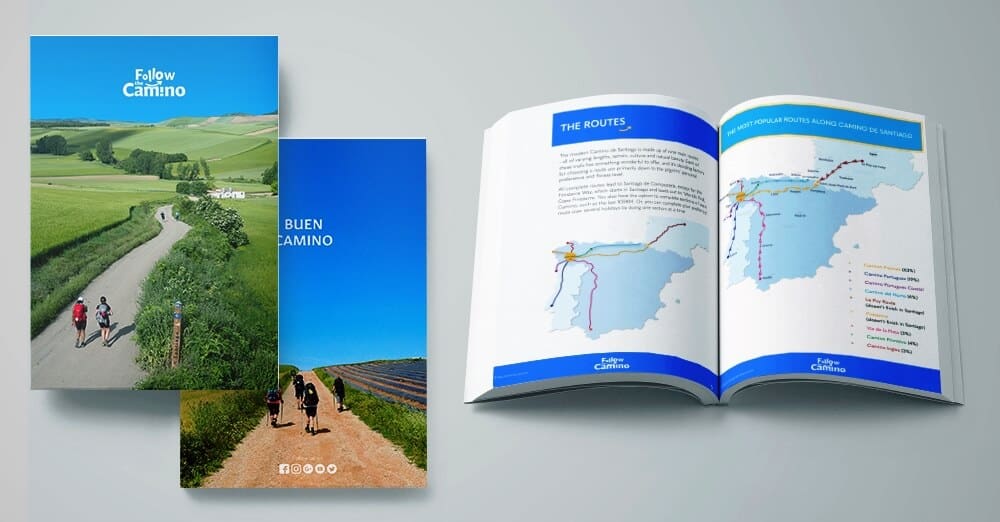In 2015, Pope Francis announced that the next Catholic Jubilee would take place in a decade’s time. Nearly 10 years on, in January Pope Francis launches a year of prayer ahead of the 2025 Jubilee. For Catholics, the Vatican Jubilee 2025 is one of the holiest dates in the calendar. But what exactly is the 2025 Jubilee? And why is it such an important time for prayer and pilgrimage to Rome?
What is the Jubilee of 2025?
In Catholicism, a Jubilee is a special year of the remission of sins and universal pardon, for both the living and the deceased. The Rome Jubilee 2025 will last around a year, likely starting around Christmas 2024. This will be announced with the publishing of a Papal ‘Bull of Indiction’ by Pope Franics on the Solemnity of the Ascension (expected on 9 May 2024).
The 2025 Jubilee celebrations will take place mostly in Rome, with a range of cultural events and concerts taking place in religious sites around the city. The Jubilee of 2025 will also give believers the opportunity to come to the Eternal City to pray and reflect on their lives.
Visiting the 7 pilgrimage churches of Rome in a 25km-walk between some of Rome’s magnificent basilicas, including Saint Peter’s and the Basilica of Saint Mary Major, will be a crucial element of Jubilee 2025.
Another core tradition retained for the Catholic Jubilee 2025 is the Opening of the Holy Doors. The most significant, in Saint Peter’s Basilica, is opened by the Pope at the start of the 2025 Jubilee. Those completing a Rome pilgrimage can then enter through the Holy Door and obtain the special Jubilee indulgence, as well as experience a unique spiritual moment. The other 3 Holy Doors are in the Archbasilica of Sanit John Lateran, Basilica of Saint Paul Outside the Walls and Saint Mary Major.
But the Jubilee of 2025 is about much more than just visiting religious sites. It’s an important part of the Roman Catholic pilgrimage tradition, dating back centuries. Over the course of the year, believers from all over Europe and further afield will go on pilgrimages to Rome to engage in reflective prayer and receive the Sacrament of Reconciliation.
What is the significance of pilgrimages to Rome?
For more than 1,300 years those of the Catholic faith have been taking pilgrimages to Rome from across the European continent. The traditional pilgrim’s route started at Canterbury in England before winding through France and Switzerland, down to Rome and across to the state of Puglia for ports embarking to the Holy Land. Later, in the Middle Ages, Rome and the Vatican became the primary destination for this pilgrimage. Over time, this route became known as the Via Francigena (“the road coming from France”).
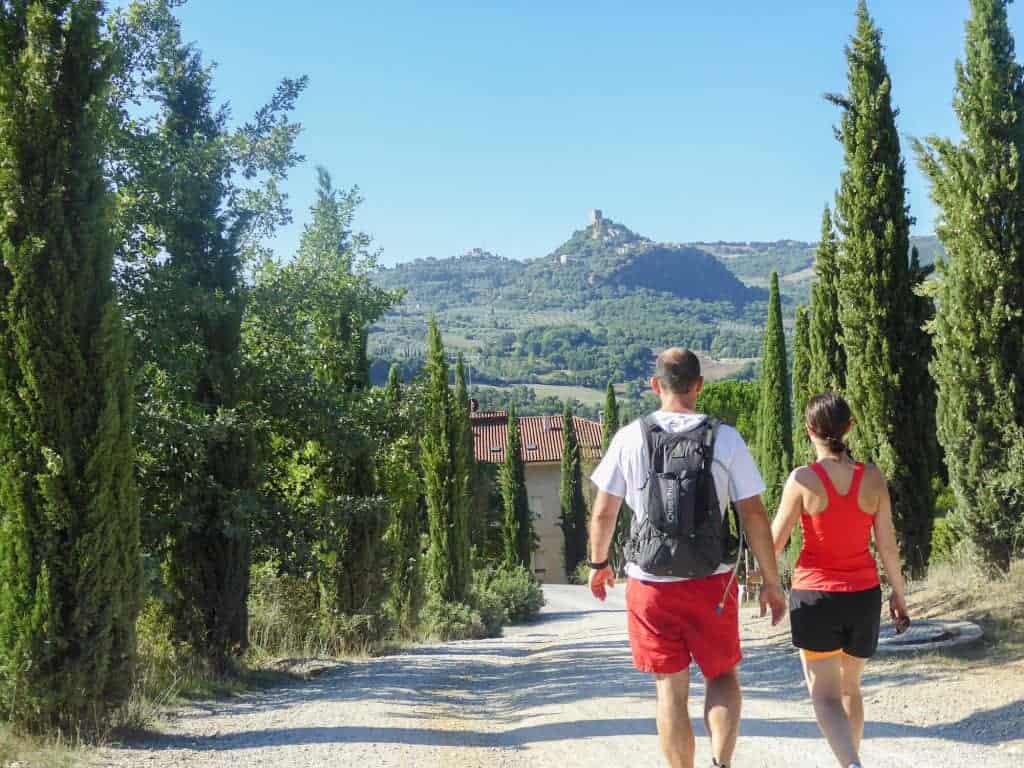
This isn’t the only route to the Italian capital. The Saint Francis Way, an Assisi to Rome pilgrimage that starts in Florence, is linked to the life of the venerable saint and offers pilgrims a scenic route into Rome that offers similar opportunities for reflection and companionship along the road.
What’s most important about a pilgrimage is your emotional and spiritual way of being. The Jubilee 2025 gives people the opportunity to set out on a journey of personal discovery and to cross boundaries. While this may be done literally in travels across land, sea, and sky, it’s also a journey of the spirit and of faith.
It’s one that begins with a resolution to set out and change, to reconcile with issues, forgive sins, and to seek absolution for your own mistakes.
Follow the Camino on your Jubilee pilgrimage
A Canterbury to Rome pilgrimage along the Via Francigena is no simple task. With up to 2,100 km of walking trails, pilgrims can spend around 100 days walking if completing the full route.
Along the way travellers will pass through all kinds of terrain, including lush fields, dense forests, and rolling hills. You will also travel through some urban centres with plenty of accommodation – however, given the unprecedented demand for pilgrimages to Rome in the Jubilee years, the many quiet villages you stop in may not have accommodation available.
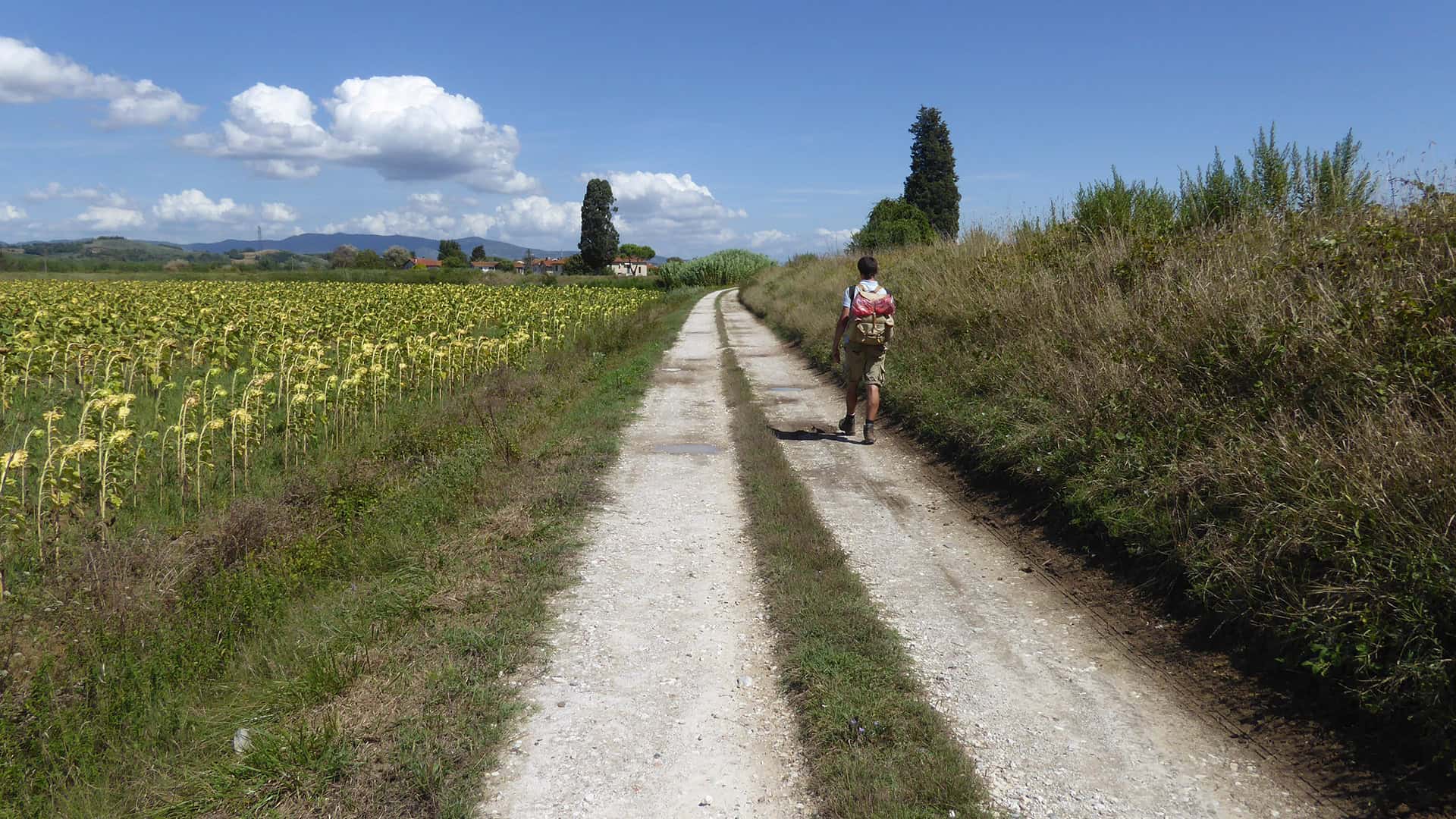
The Via Francigena is also not as popular as the main Camino de Santiago, and so the route is not as well waymarked and there are fewer amenities.
Follow the Camino was the first-ever tour operator to arrange travel packages to the Camino de Santiago in 2007. Since then we have grown from strength to strength, helping thousands of pilgrims on their way.
Though this is easily the longest route we operate, our team of travel experts can arrange accommodation and meals every day of your pilgrimage to Rome, as well as advice on sites of religious significance to see along the way. We also provide you with a comprehensive pre-departure briefing and offer 24/7 emergency support, to ensure you can focus on the journey ahead with a calm and open mind.
For details on the Via Francigena route to Rome, contact Follow the Camino today.



